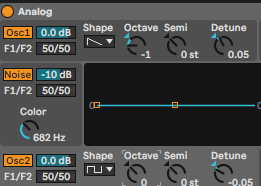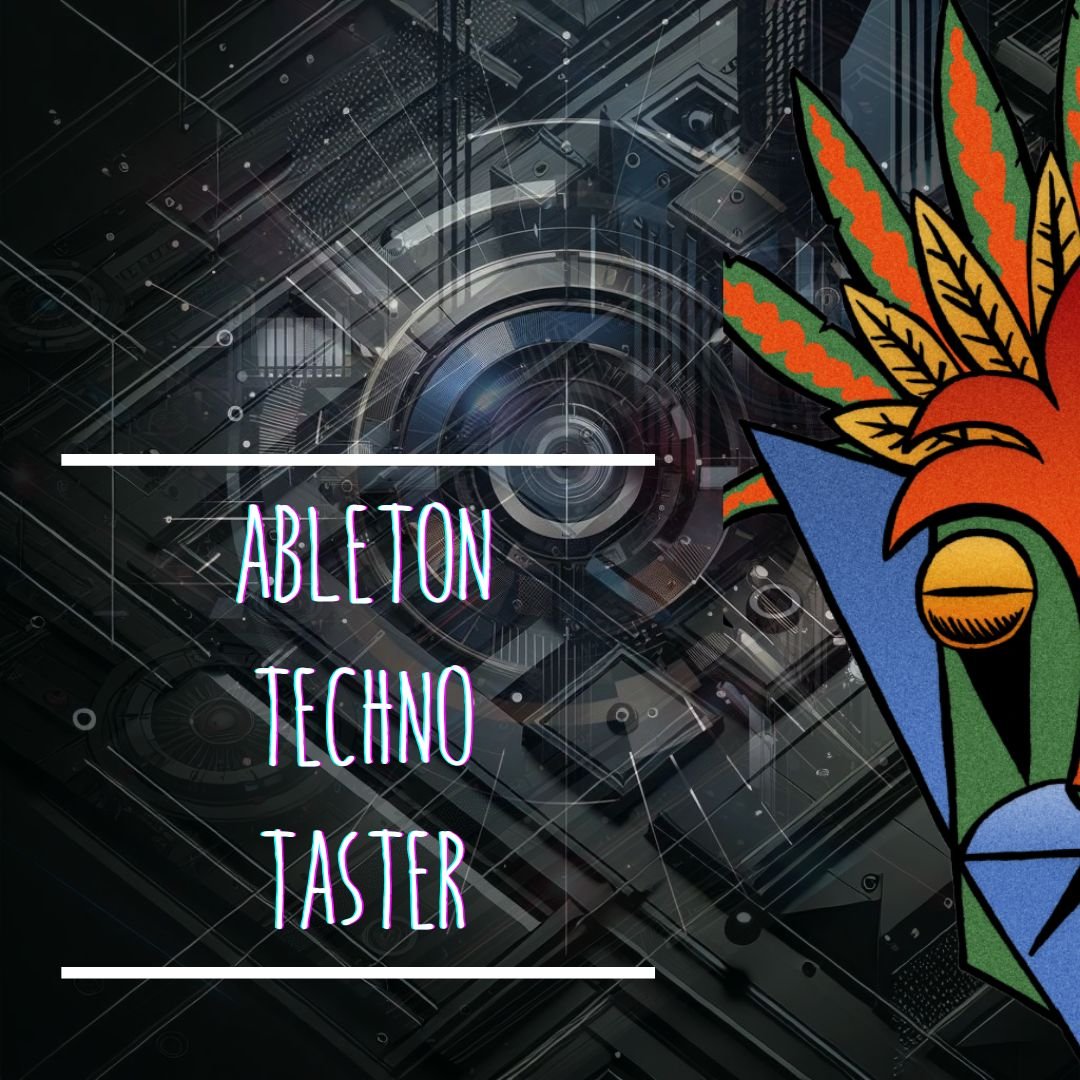The Art of Crafting the Bouncy Disco Bass: A Deep Dive into "Inspector Norse" by Todd Terje
The world of electronic music is vast and varied, but there are certain tracks that stand out, resonating with audiences and leaving an indelible mark on the genre. "Inspector Norse" by Todd Terje is one such track. With its infectious rhythm, catchy melodies, and, most notably, its iconic bouncy disco bass, it's a masterclass in electronic music production. In this article, we'll guide you through the process of recreating this signature bass sound using Ableton's Analog synth.
Oscillator Dynamics: Crafting the Heartbeat of "Inspector Norse" !
In the realm of electronic music production, oscillators are the lifeblood of any synthesizer. They generate the raw sound waves that are then shaped, modulated, and processed into the final sound we hear. When aiming to recreate the iconic bassline of "Inspector Norse" by Todd Terje, understanding the intricacies of oscillator dynamics becomes paramount.
The Synthesizer: Ableton's Analog Ableton's Analog is a versatile synthesizer that emulates the golden era of analog synthesis. Its dual oscillators, combined with a rich modulation matrix, make it a prime choice for crafting vintage and modern sounds alike.
Oscillator 1 (Osc 1): The Warmth Provider The Sawtooth waveform is renowned for its harmonic richness. It's a waveform that contains every harmonic, making it sound full and robust. For our "Inspector Norse" sound:
Waveform: Choose the Sawtooth. Its harmonic content is perfect for a bass sound that needs to stand out but not overpower.
Octave Setting: Drop it down by one octave (-1). This ensures the bass occupies the lower frequency spectrum, giving it a deep and resonant feel.
Detuning: Introducing a slight detuning thickens the sound. This is because the slight phase difference between the detuned wave and the original creates a warm, phasing effect, adding depth and richness.
Oscillator 2 (Osc 2): The Texture Enhancer While Osc 1 provides the foundational tone, Osc 2 introduces additional texture and character.
Waveform: The Square waveform is characterized by its hollow, woody tone. It's less harmonically rich than the Sawtooth but introduces a unique timbre that complements our foundational tone.
Pulse Width: Adjusting this to 100% modifies the square wave's duty cycle, changing its harmonic content and introducing a slightly nasal quality.
Detuning: Just like with Osc 1, a slight detuning here creates a richer sound. The interplay between the detuned Square and Sawtooth waves results in a complex, evolving texture.
Sub Oscillator: This is the secret sauce. Cranking it up to 100% introduces a sine wave an octave below Osc 2. This reinforces the bass frequencies, giving the sound a deep, resonant undertone that's felt as much as it's heard.
In essence, the oscillators in Analog, when set up as described, work in tandem to produce a sound that's both warm and textured. It's a delicate balance of foundational tones and harmonic content, all working in harmony to capture the essence of the "Inspector Norse" bassline.
Filter Magic: The Art of Sound Sculpting !
In the vast landscape of sound design, filters are akin to a sculptor's chisel. They meticulously shape, mold, and refine the raw sonic material, transforming it into a musical masterpiece. When crafting the iconic bassline of "Inspector Norse," understanding the nuances of filtering becomes essential. Let's dive deeper into the world of filters and their transformative power.
The Role of Filters in Synthesis At their core, filters are frequency-selective tools. They allow certain frequencies to pass through while attenuating or boosting others. This selective frequency shaping is what gives a sound its unique character, timbre, and feel. In the context of our bass sound, filters help in achieving that warm, resonant, and bouncy quality reminiscent of disco tracks.
Filter Type: Low-pass 24dB The Low-pass 24dB filter is characterized by its steep roll-off. What this means is that frequencies above the cutoff point are attenuated rapidly, ensuring that only the desired frequencies remain. This type of filter is perfect for bass sounds, as it allows the lower frequencies to shine through while gently taming the highs, ensuring a warm and rounded sound.
Cutoff: The Gateway to Frequency The cutoff frequency, set at 154Hz in our setup, acts as a gatekeeper. Frequencies below this threshold are allowed to pass through largely unaffected, while those above are attenuated. By setting the cutoff at 154Hz, we ensure that the bass retains its warmth and body, while any potential harshness from higher frequencies is smoothed out.
Envelope Amount: Adding Movement With a setting of 5, the envelope amount determines how the filter responds over time. Think of it as instructing the filter to "move" according to the dynamics of the sound. This movement introduces a sense of evolution and dynamism, ensuring the bass isn't static but has a lively, animated quality.
Resonance: Highlighting Character Resonance, set at 28%, introduces a peak right at the cutoff frequency. This has the effect of emphasizing certain frequencies, adding a touch of "shine" or "character" to the sound. In the context of our bass, it accentuates the warmth, making the bass sound even more rich and resonant.
In conclusion, filters, when used effectively, are transformative tools in sound design. They don't just alter a sound; they elevate it. In the case of the "Inspector Norse" bassline, the filter settings in Ableton's Analog are meticulously dialed in to capture the essence, warmth, and bounce of the track, ensuring a sound that's both iconic and timeless.
Envelope Crafting: Painting the Sonic Journey !
In the realm of sound design, the envelope is akin to an artist's brushstroke on a canvas. It paints the sonic journey of a sound, illustrating its evolution from the moment it begins to the instant it fades away. The envelope doesn't just dictate how a sound behaves; it tells its story, imbuing it with emotion, movement, and life.
Understanding the Envelope's Role At its core, the envelope defines the dynamic progression of a sound. It's the roadmap that guides how a sound rises, sustains, and eventually diminishes. When crafting a bass sound, especially one as iconic as in "Inspector Norse," the envelope settings are paramount. They determine the sound's punch, presence, and groove.
Attack: The First Impression The attack phase is the sound's initial introduction. An instantaneous setting ensures that the bass responds immediately when a note is struck. This immediacy is crucial for genres that demand rhythmic precision, ensuring that the bass aligns perfectly with the beat and other musical elements.
Decay: The Graceful Descent Following the attack, the decay phase dictates how the sound reduces in volume after reaching its peak. A short decay ensures that the bass remains punchy and defined. It prevents the sound from lingering at its maximum volume, which could overshadow other elements in the mix.
Sustain: The Steady State The sustain phase determines the level at which the sound maintains itself as long as the note is held. By setting this to 0, we ensure that the bass doesn't overstay its welcome. It creates a sense of rhythm and tightness, allowing the bass to groove seamlessly without becoming overbearing.
Release: The Graceful Exit Lastly, the release phase guides the sound's fade-out once the note is released. A short release ensures that the bass sound concludes smoothly, without an abrupt end. This smooth transition is essential for maintaining musical fluidity, especially when playing a sequence of notes.
In essence, the envelope is the storyteller of our bass sound. It narrates its journey, from its assertive entrance with the attack to its graceful exit with the release. By understanding and meticulously crafting each phase of the envelope, we breathe life into the sound, ensuring it dances, grooves, and resonates in perfect harmony with the track's vibe.
Pro Tips for Crafting a Masterful Bass Sound:
Warmth with Saturation: The Analog Embrace Saturation is more than just an effect; it's a bridge that connects the digital clarity of modern production with the warm, inviting embrace of vintage analog gear. By introducing a touch of saturation to your bass, you're not just adding harmonic content; you're infusing it with a character reminiscent of classic recordings. This subtle coloration can make your bass sound fuller, richer, and more present in the mix. It's like wrapping your sound in a cozy blanket, giving it that sought-after warmth that's often associated with vintage tube amplifiers and tape machines.
Vintage Vibe with Redux: Embracing Imperfections In the age of high-definition audio and pristine sound quality, there's a unique charm in the imperfections of yesteryears. The redux effect is a nod to the early days of digital audio, where bit reduction and sample rate reduction were common due to hardware limitations. By sprinkling in a bit of redux effect on your bass, you introduce artifacts, bit-crushing, and a distinct crunch. These "imperfections" can add texture, making your bass sound grittier and more characterful. It's a journey back in time, evoking memories of early digital synths and samplers. When used judiciously, the redux effect can transform your bass from a simple sound to a nostalgic sonic experience.
Layering for Depth: Consider layering multiple bass sounds or oscillators with slightly different settings. This technique can add depth and richness, making your bass sound more complex and interesting.
Movement with Modulation: Introduce subtle modulation effects like phasers, flangers, or chorus to your bass. These effects can add movement and a sense of space, making the bass sound more dynamic and less static.
EQ Sculpting: Always pay attention to your equalization. Carve out unnecessary frequencies and boost the essential ones to ensure your bass sits perfectly in the mix. Remember, it's not always about how loud the bass is, but how well it fits with other elements in the track.
By incorporating these pro tips into your sound design process, you'll not only enhance the quality of your bass but also elevate the overall sonic landscape of your production.
Conclusion: With the right tools and techniques, you can recreate the spirit of modern disco encapsulated in tracks like "Inspector Norse". Dive deep into the world of sound design with Ableton's Analog, and let the grooves take over. Whether you're a seasoned producer or just starting out, these insights will equip you to craft basslines that resonate on dancefloors worldwide. Embrace the magic of synthesis and let your tracks shine with SynthSecrets
































